
Table of
Contents
 Table of Contents |
The collection plan provides a framework that
collection managers can use to determine and evaluate intelligence
needs. Then they use the plan to meet those needs. Because of
the diversity of missions, capabilities, and requirements, the
collection plan has no prescribed doctrinal format. However,
a dynamic collection plan should--
The selection of a format by any particular command
is based on the requirements of that command and the resources
available for collection management. However, regardless of the
format selected, it must follow the logical sequence of collection
management described in Chapter 3.
In addition, the plan must be easily adjustable to changing requirements,
situations, and missions. This appendix provides several recommended
formats, any of which may be adjusted to fit your specific requirements.
The intelligence collection plan worksheet is
a valuable aid in planning and directing the collection effort.
For many requirements, particularly those concerned with enemy
capabilities and vulnerabilities, a written collection worksheet
is advisable. The detail in which it is prepared, however, depends
on the requirements collection managers need to satisfy and the
overall coordination needed during the collection effort. At battalion
and brigade, the collection plan worksheet is very informal. It
may consist of a list of available collection means plus brief
notes or reminders on current intelligence requirements and specific
information to collect.
At division level and above, collection planning
is more complex. The PIR of a corps commander often require in-depth
analysis, and the coordination of the overall collection effort
is a major undertaking. For that reason, written collection worksheets
prepared at these echelons are detailed.
Figure A-1 shows
a format commonly used at division and corps level. EACs as well
as brigades and battalions can modify this format to fit their
own requirements.
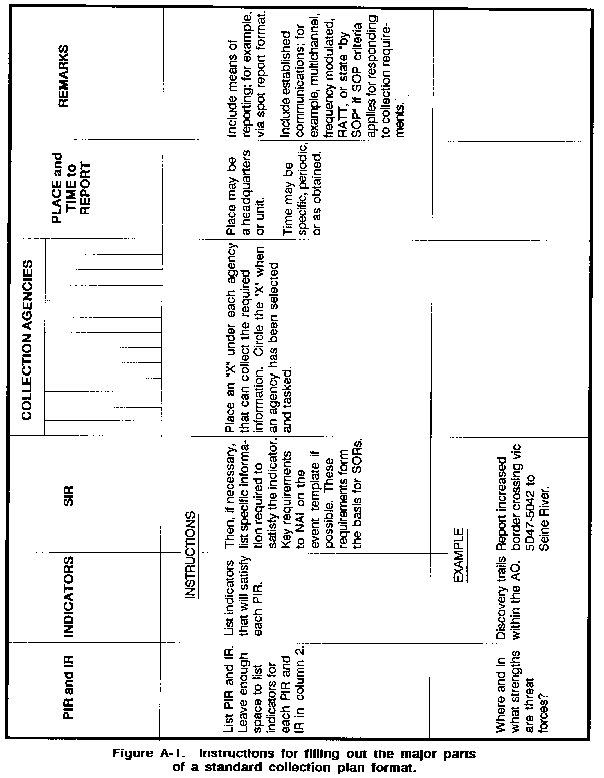
Figure A-2
provides an example of a completed collection plan using sample
entries.
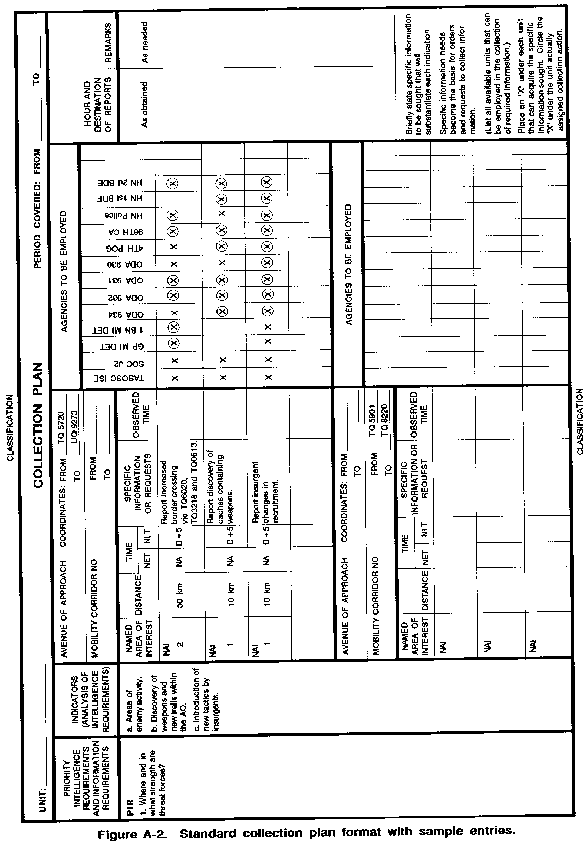
Another method for maintaining a collection plan
is in the form of a visual file index using 5- by 8-inch cards
(see Figures A-3 and A-4). In this method, a collection requirement
is displayed across the bottom of a card. The remainder of the
card may contain the following:
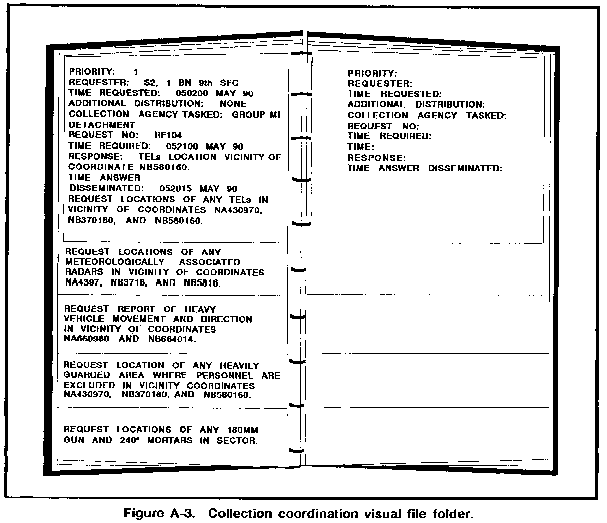
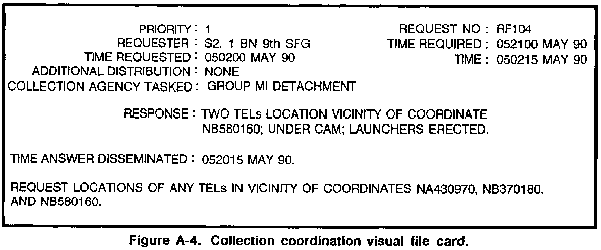
Priorities can be shown by using different colored
cards or index tabs. For example, a red card or index tab could
indicate a highly time sensitive request to the collection manager,
no matter how many shift changes take place.
The collection manager can group the cards in
the visual files in a number of ways: OB factors, NAIs, requester,
or collector. In each operation, the file may start out one way
and, by necessity, change as the situation changes. This can be
done quickly since the cards are easy to manipulate.
When the collection requirement is satisfied,
the card is removed from the visual files. The remainder of the
cards are not disrupted. The collection manager can then place
the 5- by 8-inch card in a small file organized by geographic
areas. This enables the collection manager to build a data base
on the responsiveness of the collection agencies within specific
geographical areas.
If the visual file method is used, the collection
manager must maintain two charts. One depicts the PIR and IR which
drive the collection effort; the other lists the available units
and agencies and those tasked with each requirement. This latter
chart is needed to prevent overloading or overlooking any single
available collector. These two charts are shown in Figure A-5.
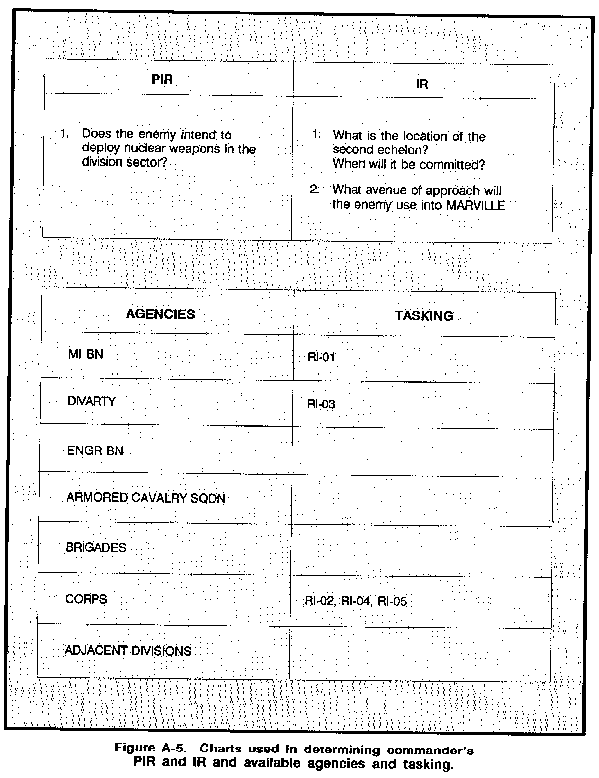
The collection plan worksheet at maneuver battalion
and task force level is discussed below. Figure A-6 is an example
of one type of modified format. Each column has a letter designator.
For example, the priority column is "A," the NAI column
is "B, " and so on. The lettering makes it easy to quickly
assign a new R&S mission, or modify an existing mission. Just
transmit pertinent information within each column. For example:
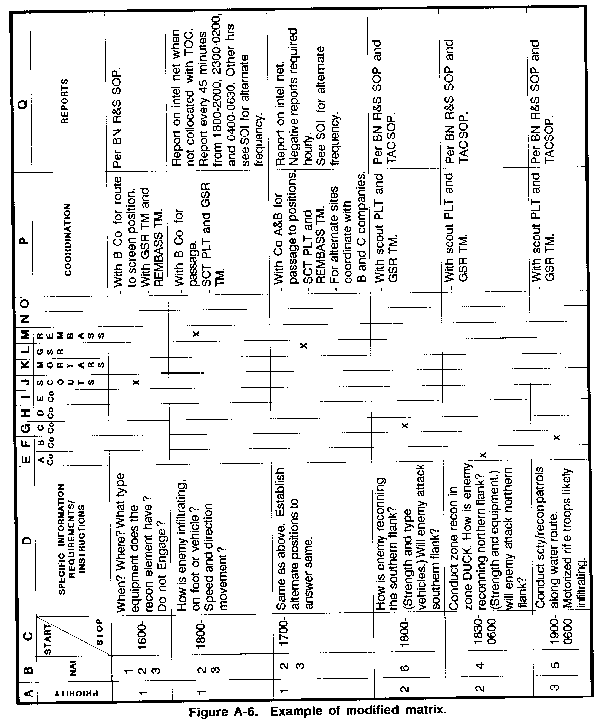
The S2 told the attached GSR team to monitor
NAI 4 from 1800 to 2000, They should expect to see BRDM or BMP
vehicles (possibly reinforced with tanks) up to platoon size (3
vehicles). He also told the GSR team they must coordinate with
A Company, and should report targets by type (light, heavy wheeled;
light, heavy tracked) and number of vehicles, location, speed,
and direction of movement.
Figure A-7 is a similar collection plan format.
The horizontal lines are identified by number and the vertical
columns are identified by letter. Use this system to modify one
specific element of the matrix. For example:
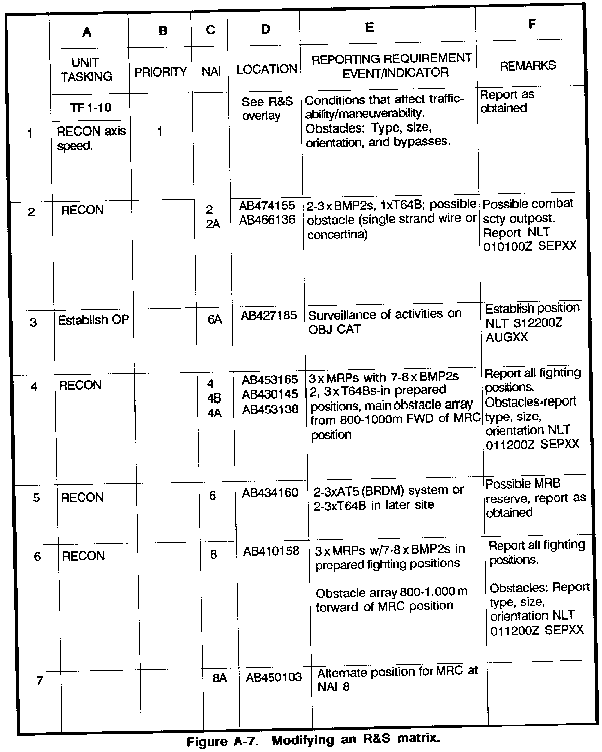
In this example, the S2 told TF 1-10 to establish
an observation post overlooking a particular NAI. The observation
post is to observe a templated alternate position for a motorized
rifle company at NAI 8.
These are just two examples of techniques the
S2 can use to quickly re-task deployed R&S assets. There are
many more techniques. The key is to establish a standard way to
quickly and easily modify the collection plan based on the commander's
changing needs.
"Non-Linear Battlefield"
Collection Plan Worksheets
It often occurs that the availability of collection
systems is far outweighed by the number of the command's intelligence
requirements. A useful technique in such circumstances is to carefully
prioritize each indicator and SIR in addition to the PIR and IR
they support. The "non-linear" collection plan format
especially lends itself to these techniques.
Figure A-8 shows one format, an "indicator
worksheet" which aids in determining the relative priority
of indicators. After identifying the complete set of indicators
which will satisfy the command's PIR and IR, enter each indicator
onto the indicator worksheet.
In the example at Figure A-8:
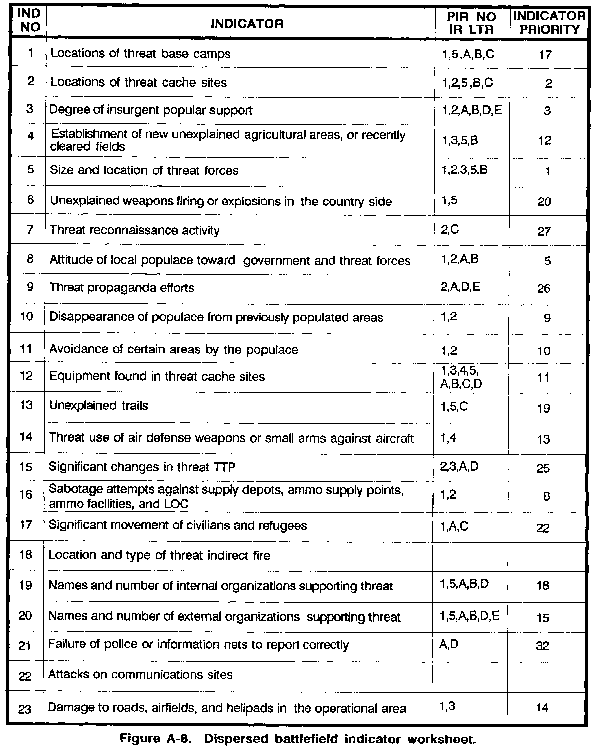
Figure A-9 shows another technique for prioritizing
indicators that is especially useful when there is a large number
of them. This format is commonly referred to as a "prioritization
matrix. " Its distinguishing feature is the use of ''weighted
values" for each PIR and IR.
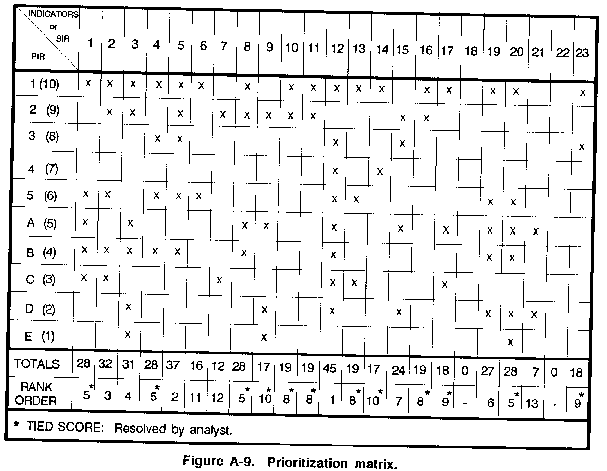
Use judgment to assign a weighted value to each
PIR or IR. You can set the value of each PIR and IR by counting
the number of PIR and IR and then giving the highest PIR the highest
number Each successive PIR and IR would get a progressively lower
priority (as in the example in Figure A-9). Alternatively, you
can place a greater weighting on individual PIR and IR to more
accurately reflect its relative importance.
Those with lower weighted values have lower priorities.
In cases where two or more indicators have the same weighted value,
discriminate which has the highest priority based on the command's
needs.
Both of the above techniques for prioritizing
indicators are useful when using a "non-linear battlefield"
collection plan worksheet format. An example of a completed collection
plan using the "non-linear battlefield" collection plan
format is at Figure A-10.
Using Figure A-10 as an example:
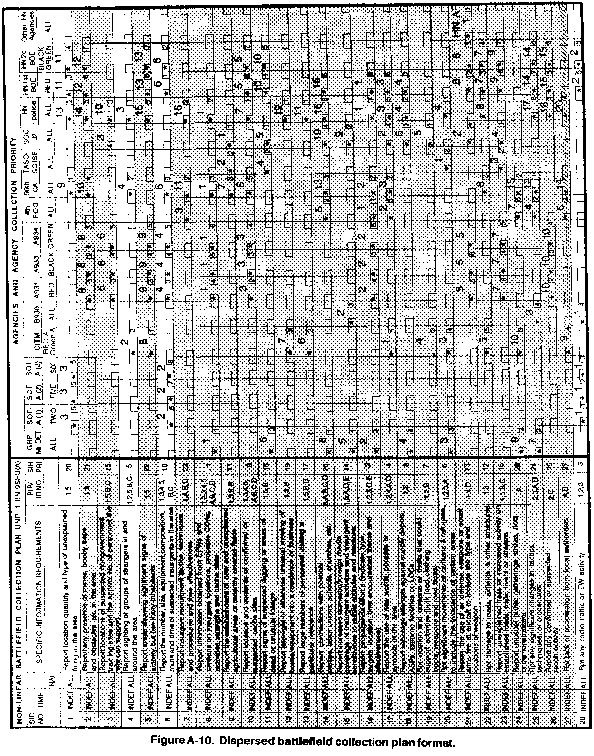
In the final step, the collection manager determines
the relative priority of each of the SIR with which each agency
is tasked.
Again, using Figure A-10 as an example:
There is no prescribed
doctrinal format for the collection plan or its worksheets. Use
whatever format is best suited to the needs of your command. Those
shown above are only examples that can be adapted, as needed,
or completely replaced with one of your own design.